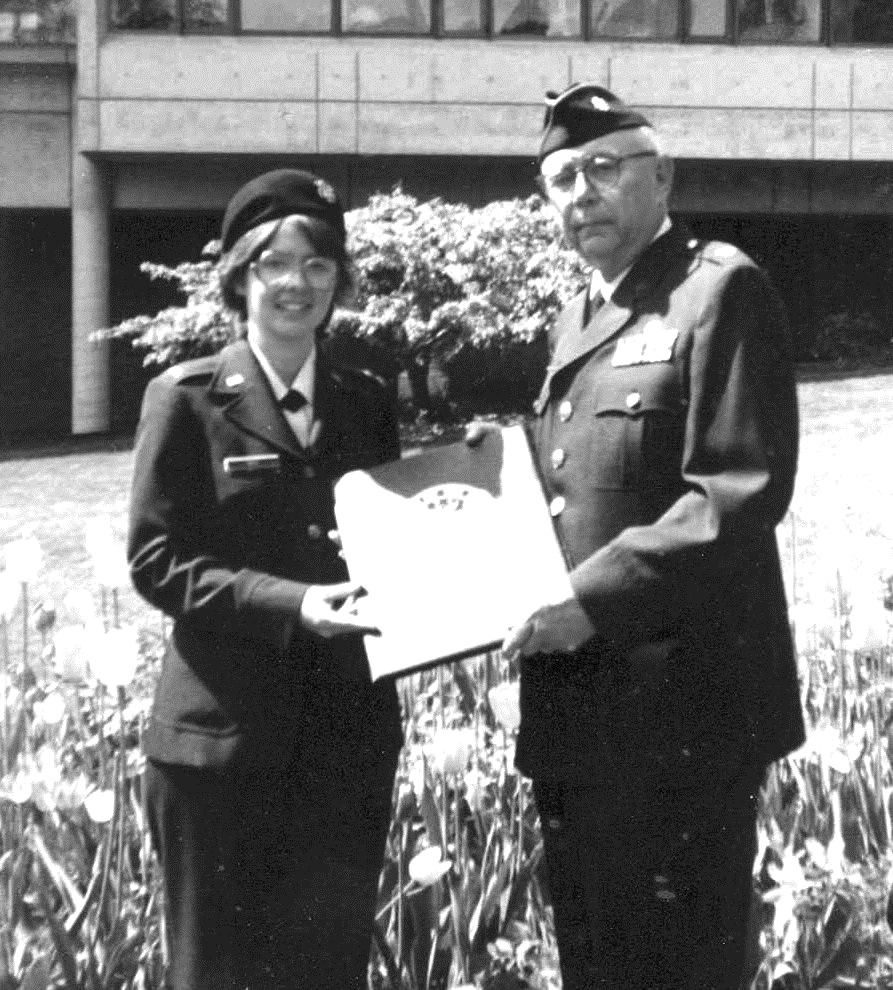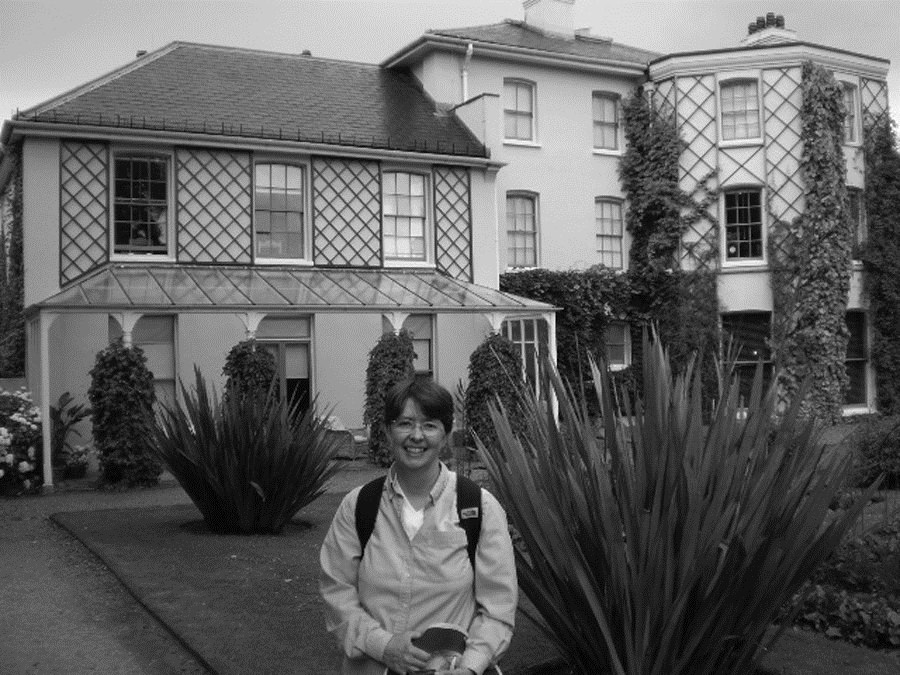“Virginia does so many things well,” says Jamie Schlessman of her colleague Virginia Smith, Associate Professor in the Chemistry Department at the United States Naval Academy, “that it is appropriate to classify her as a Renaissance person.”
Schlessman, also an associate professor in the bio subgroup Smith heads, cites Smith’s ability to handle her workload, read voraciously, advocate for social justice, lecture on the biochemical underpinnings of events like the 1918 flu pandemic, play guitar, and chat about last night’s television program. Still, “her door is always open to her students, and she excels in the classroom.”
Smith’s interest in diversity began early. “I always knew I would be a scientist, but in high school, bassoon and Latin competitions got most of my extracurricular energies.” At Mount Holyoke College on an Air Force ROTC scholarship, she double-majored in chemistry and physics and took extensive coursework in Latin and Greek.
During five years of Air Force active duty, Smith gained analytical skills as a reliability engineer reviewing electronic system contracts and speaking skills as an intelligence officer. “Once you have given a classified briefing to a three-star general in a fortified bunker in Korea, addressing your graduate committee in a departmental conference room isn’t so intimidating.”
In 1988, Smith worked for a Sacramento company, performing pesticide residue analysis on materials ranging from strawberries to urine to clothing. The following year, she and her husband Jack Thornton, a retired USAF pilot, moved to Seattle. At Oncogen, a bio-tech company later absorbed by Bristol-Myers Squibb, her group provided peptide synthesis and analytical services to the entire company, so she interacted with scientists working on a wide range of projects. Smith’s supervisor and mentor, Wes Cosand, supported her growing independence and suggested she attend Washington State University (WSU) for graduate school.
In Lin Randall’s lab at WSU, she studied the structure of ligand-binding properties of the bacterial chaperone protein SecB. Smith still works on SecB with Randall for part of each summer. “She taught me to perform experiments with great care and to report the results with utmost honesty. I hope that I have Lin’s ability to recognize the value of every well-done experiment, regardless of how results compare to what
we expected.”
“In my group,” says Randall, “we have tea twice a day to promote conversation and broaden our horizons. Virginia’s thoughtful and scholarly comments about many subjects are always a wonderful addition.”
Ralph Yount, former president of FASEB and BPS, mentored Smith at WSU as her first biochemistry professor and a member of her graduate committee. “From across the hall, I watched curiously as students and postdocs in Ralph’s bustling lab burned the midnight oil each year to finish posters for the BPS Annual Meeting, the highlight of their year.”
Nudged by Yount, Smith joined BPS, attending her first annual meetings as a postdoc in Bob Matthews’ lab, then at Penn State University. Nominated by Yount, she served on the BPS Public Affairs Committee from 2000 to 2008. “Seeing the inner workings of the Society gave me enormous respect for those who devote so much time and energy to achieving the Society’s goals.”
Matthews’ group performed thorough multi-dimensional spectroscopic studies on model proteins, such as dihydrofolate reductase of E.coli, to determine factors that governed how they folded or achieved stable three-dimensional structure. She liked the work but decided that in her own lab, she would study two proteins – methionine sulfoxide reductase A of E.coli and human cytoplasmic aconitase - that were less “well-behaved” than those in Matthews’ lab.
She also elected a career at an undergraduate institution instead of a research university. “While I knew the great need for people to perform high-level basic research, I saw an equally compelling need to educate and energize the next generation of scientists to fill those labs.”
Smith considers her path to her dream a smooth one, thanks to great mentors, timely opportunities, being a more mature graduate
student, and having a husband who “gave up his own career as a college administrator to follow me around until I got my current faculty position.”
She is happy at the Naval Academy. “Young people come to a service academy to prepare for a military career. Consequently, few of them will ever pursue graduate degrees in science. But I hope that a positive research experience in my lab will encourage them to view scientific research as an enterprise worth supporting.”
As Trident Scholars, high-achieving cadets that dedicate most of the senior year to research, former students Joanne So and Pritha Workman worked in Smith’s lab. Both are now second year medical students—So at Tulane University and Workman at the University of California, San Diego. From Smith, So learned that “discovery is not confined to a spectrometer or centrifuge; it transcends the lab and begins with curiosity. She showed me the intricacies of science in mundane objects, like the complexity of a bumblebee’s wing examined under a microscope.” Workman says that Smith’s “excitement over our laboratory victories, such as finally getting an enzyme assay to work, is contagious and confidence-building. She also shared her non-scientific loves, like animals and Russian literature.”
Smith hopes that her “modest progress” on human cytoplasmic aconitase, which “moonlights” as human iron-responsive
element-binding protein, will eventually provide insight into the mechanisms by which proteins switch functions as cellular environment changes. “With its role in oxidative repair, the work on methionine sulfoxide reductase could potentially yield information about aging and life extensions.”
Currently on sabbatical, Smith is researching and writing a book about Robert Frost’s use of scientific imagery in his poetry. Her husband, is a writer and adjunct English professor at a community college. Her two step-daughters, Amanda and Rebecca live in Germany and California, respectively.